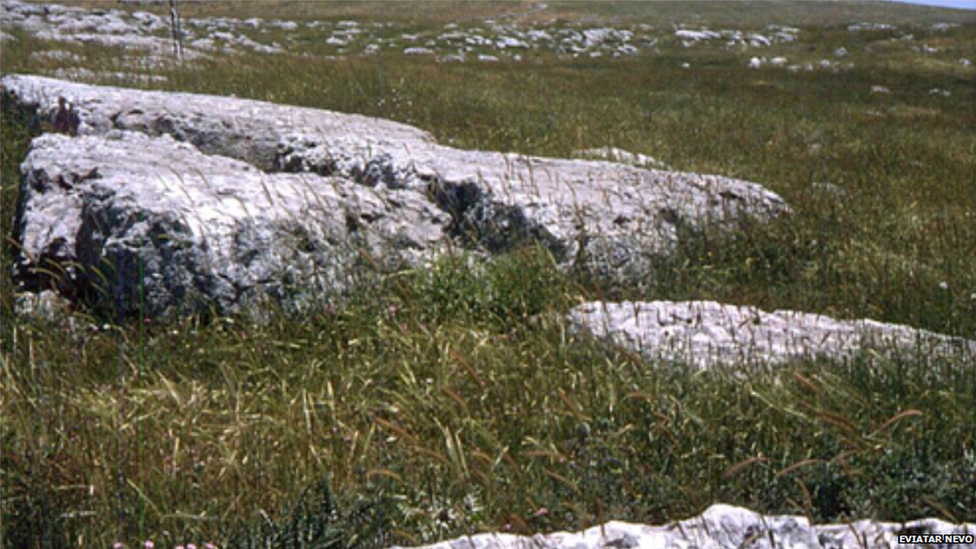Wild wheat genetics offer climate hope for food crops
- Published

Scientists are excited by the presence of "beneficial mutations" in wild relatives of wheat
Wild relatives of food crops, such as wheat, host an abundant array of genetic material to help the plants cope with a changing climate.
In a study over 28 years showed that populations of wild wheat accumulated "beneficial mutations" such as a tolerance to temperature increases.
Researchers say the results improve our understanding of how plants are responding to a warming world.
The findings appear in the Proceedings of the National Academy of Sciences, external.
"We get some very exciting results," explained lead author Yong-Bi Fu, a research scientist from Agriculture and Agri-Food Canada.
"One of which is that we can demonstrate that over 28 years, and 28 generations, you can see the wild relative of the plant accumulate more genetic mutations, and we found that most of the population is still adaptable."
Although the team did find that there were individual specimens in the study that did not survive the conditions associated with a warmer environment, there were others that were able to adapt in such a way that meant they could cope with a warmer world.
The study involved 10 populations of emmer wheat in Israel. Dr Fu say that the temperature increase over the three decades amounted to up to two degrees Celsius, which is similar to the increase that the Paris Climate Agreement hopes to limit global average temperatures from rising above pre-industrial levels.
'Really exciting'
"That is really exciting because it means that the population is able to get beneficial mutations," Dr Fu told BBC News.
"This mutation is crucial, and we can see that we need a lot of effort to protect and conserve the crop's diversity in the wild, natural population."
The team suggested that this insight helped to improve our knowledge of how plants could adapt to future climate change.
Dr Fu also highlighted the work of UK scientists who, reporting in Nature Biotechnology, who were developing ways to clone disease-resistance (R) genes from wild relatives in order to engineer broad-spectrum resistance in domesticated crops.
He said that a similar approach could be used to clone or use climate-resistant genes from the plants' wild relatives to cross-breed into existing crops in order to make our food crops more climate resilient.
Game changer
Last year, scientists identified the location of 100,000 wheat genes. This was considered to be a "game changer" in the race to develop climate change-resistant varieties of the vital primary food crop.
The UN has estimated that wheat production needs to be increased by 60% by 2050 in order to feed the population, which by then will have grown to an estimated 9.6 billion.
Science is also developing mathematical models to identify genetic material that could help improve food crops' resilience to climate change.
Scientists hope the models will speed up the process of identifying traits, such as drought resistance, allowing breeders to grow climate-tolerant crops.
Globally, there are 1,700 major agricultural gene banks that house in excess of seven million samples - a vast resource that researchers said made the task of locating the sought-after traits a bit like finding a needle in a haystack.
A study in 2016, published in the Royal Society Biology Letters journal, highlighted the risk posed by projected climate change on the world's ability to grow enough food.
A US team of researchers found that forecasted shifts in climate by 2070 would occur too quickly for species of grass crops to adapt to the new conditions.
The species facing an uncertain future included wheat, corn, rice and sorghum, which provided almost half of the calories consumed by humans.